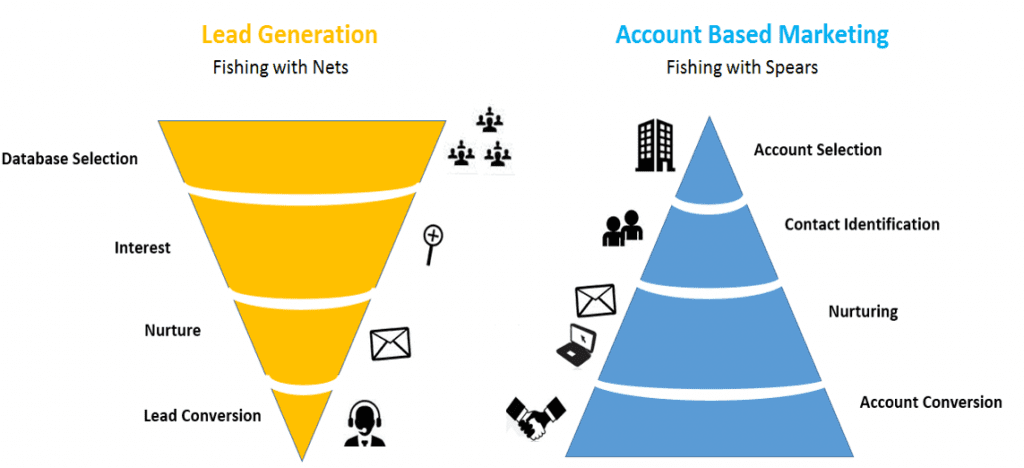Marketing and selling to b2b buyers continue to become an ever more complex landscape. For manufacturers, the complexities of product and channel only compound the challenges. So should manufacturers looking to build a modern sales and marketing machine just give up? Definitely not. In talking with manufacturers I hear commonality in their challenges. Read on to see how I address these common manufacturing marketing challenges and solutions.
Complex Products
Products in manufacturing are often technical and complex. While the buyer is often sophisticated and technical themselves – often an engineer, they’re still looking for educational materials. A survey conducted by engineering.com found that overwhelmingly – engineers turn to search or website blogs to find answers to their most technical questions.
Solution: Build a content marketing strategy for your manufacturing firm. If your technical buyers have questions about your complex products, the best solution is to answer them in the forms of media they are consuming, which is online via written word and video.
Long Sales Cycles
One of the outcomes of complex products is a resulting long sales cycle. Gartner’s B2B buyer’s journey framework explains why this happens.

In a perfect world, the journey would be linear from identification to supplier selection, but as you can see there are a lot of places along the path for a prospect to take a detour. How do you keep your firm front and center?
Solution: Marketing automation. On average, most leads (at least half) that come through your CRM aren’t ready to buy. (See the Gartner illustration again to see why). A marketing automation plan for your manufacturing firm can fill the gap. With marketing automation, you can build out personalized follow-up campaigns based on the actions your prospects are taking and customized by the next steps you want to help them along to.
Is marketing technology the right solution for you? Take the assessment.
Buying by Committee
From 2016 to 2018 the number of stakeholders involved in a purchase decision jumped from 6.8 to 8.2 contacts at a company. As if manufacturers didn’t have it hard enough with a complex product and long sales cycle – the number of people involved in making a purchase decision continues to grow. Add in the complexity of channel relationships many manufacturers face, traditional outbound and inbound marketing can struggle to provide value on their own, in this growing complex sales environment.
Solution: Account based marketing. Account based marketing inverts the marketing and sales qualifications funnel. You start your strategy by selecting the accounts you want to build relationships with. Sales and marketing collaborate to create highly personalized buying experiences with a goal of expanding the contacts within those accounts and driving higher quality opportunities and speeding up sales cycles.

Complex Business Processes
Products and the buying experience aren’t the only sources of manufacturing marketing challenges. Often the operations around supporting these systems are riddled with inefficiencies. Requests for samples, quotes, spec sheets, etc. all require an endless amount of human interaction that drags down your team’s ability to do the work that has them focused on their highest and best use. It also allows for errors. But, that’s how we’ve always done it, you might think.
Solution: Marketing automation can help here as well. While its primary selling feature often is scale and efficiency in marketing processes. The automation features can also help simplify and drive efficiency in common internal processes. Routing requests, updating contact data and making sure the right people in your organization get notified.
Visibility Across Channel
At the end of the day, one of the biggest manufacturing marketing challenges to overcome is visibility across a manufacturer’s channel. With complex relationships across vendors, distributors, reps, and end-users it can often be hard to tell where an opportunity is coming from. Online analytics start to paint a bit of a picture, but are you really able to draw a line connecting the dots between a marketing program and revenue growth? Did ABM actually achieve an objective?
Related reading: The Surprising Ways B2B Website Design Affects Sales
Solution: Integrated CRM. Having a modern CRM that integrates across your marketing automation platform and ERP, you can begin to close the loop. You may not be able to tell if an ABM program drove X dollars in end-user purchases if you don’t get to track that data – but you can track the volume of RFPs or Specs that come from the accounts you targeted. It’ll take thinking about your channel and getting as far in the funnel as you can. But none of it will matter if your systems don’t take to each other.
Key Takeaways
Manufacturing marketing challenges continue to grow. However, technology and marketing strategies are emerging to empower manufacturers to overcome those challenges.
- Content marketing to educate around complex products
- Marketing automation to reduce long sales cycles and drive efficiency in business processes
- Account based marketing to combat buying committees
- Integrated marketing and sales systems to view across your channels


